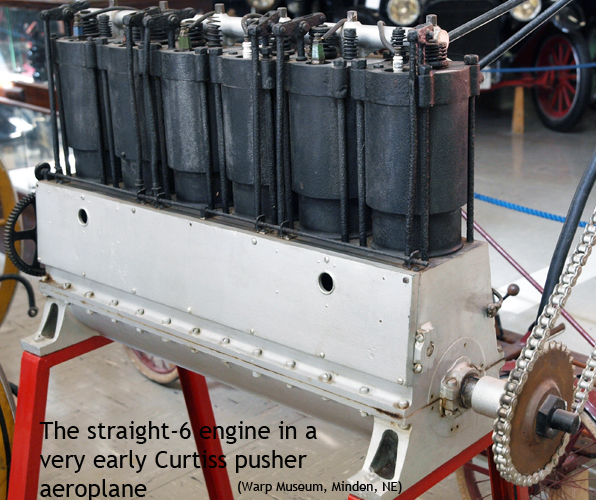How Many Cylinders?
Today, how many cylinders? The University of Houston's College of Engineering presents this series about the machines that make our civilization run, and the people whose ingenuity created them.
So how many cylinders should a car engine have? Most of our cars have either four cylinders in a row, or cylinders in a V-arrangement -- two or three on either side. So, why all this fancification? Why not just one big cylinder?
Well, think about a piston, going back and forth in a cylinder, making a crankshaft rotate. It briefly drives a shaft once every two revolutions. Our car engines run in four-stroke cycles. Ignition occurs and the piston pushes downward. Then it clears out exhaust as it goes back up. Next it pulls in a new mixture of air and gasoline on its way down. Finally, it goes up, compressing that mixture. Then another ignition, and the cycle repeats.
A single-cylinder engine speeds up on the first stroke; then it slows during the rest of a four-stroke cycle's two revolutions. That would cause such an engine to shake and vibrate.
So we need a big flywheel to keep it moving between ignitions. With more cylinders and pistons, we can pin each piston's connecting rod to a different angular location on the crankshaft -- then we time the explosions so that each one kicks the rotation along during the two revolutions. And the flywheel can be a lot smaller.
Karl Benz used a single-cylinder engine in his first 1885 car. Ford's first Model T engine had four cylinders in a row. Some luxury cars of the 1920s had inline engines with as many as eight cylinders. Engines with as many as 12 or more cylinders in a row have been used, but mainly in large marine and stationary engines.
Of course smooth running is only one goal. More cylinders give less flywheel weight, but they also mean greater manufacturing and upkeep costs. Then there's compactness. The Duesenberg straight-8 was a favorite of rich movie stars in the '20s. But it had a 12-foot wheelbase. Imagine parallel-parking that beast.
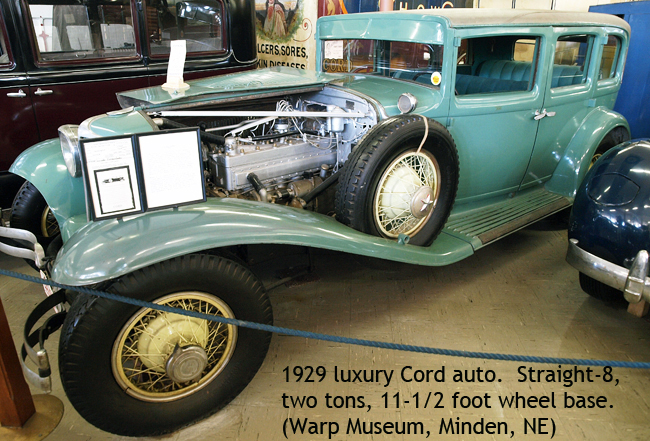
The answer was the V-8 engine -- two rows of four forming a V. Even Karl Benz experimented with a V-2 engine after he built his single cylinder motor. A V-arrangement can even let two cylinders drive a common crank pin, pushing it at different angular positions. And here complication increases: Engineers have created all kinds of clever crankshaft designs to use with cylinders in all kinds of positions -- V-4s, V-6s, flat-4s, flat-6s.
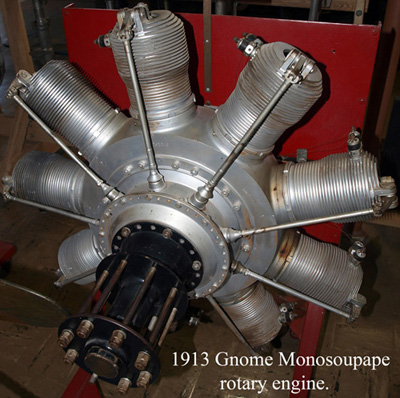 Airplanes imposed different design constraints. An inline engine offers little frontal drag. The Wright Brothers used a straight-4 engine, but with a pretty heavy flywheel. Then early builders went to engines with nine-cylinders, radiating from a central hub. The pistons spun around the shaft and needed neither flywheel nor cooling systems.
Airplanes imposed different design constraints. An inline engine offers little frontal drag. The Wright Brothers used a straight-4 engine, but with a pretty heavy flywheel. Then early builders went to engines with nine-cylinders, radiating from a central hub. The pistons spun around the shaft and needed neither flywheel nor cooling systems.
Many new technologies do settle on one best form. But some find more than one good option, then keep jockeying among competitors. Just think about PC's vs. Mac's, Classical vs. Country music -- just think about cylinders in their seemingly endless arrangements.
I'm John Lienhard at the University of Houston, where we're interested in the way inventive minds work.
See the Wikipedia entries on all the relevant topics. Search on words like automobile engines, straight-4, flat-6, V-8, 4-stroke engine, etc. Google will also send you to many simple and clear sites, such as this one.
All photos by J. Lienhard. Toyota engines courtesy of Mike Calvert Toyota, Houston, TX.
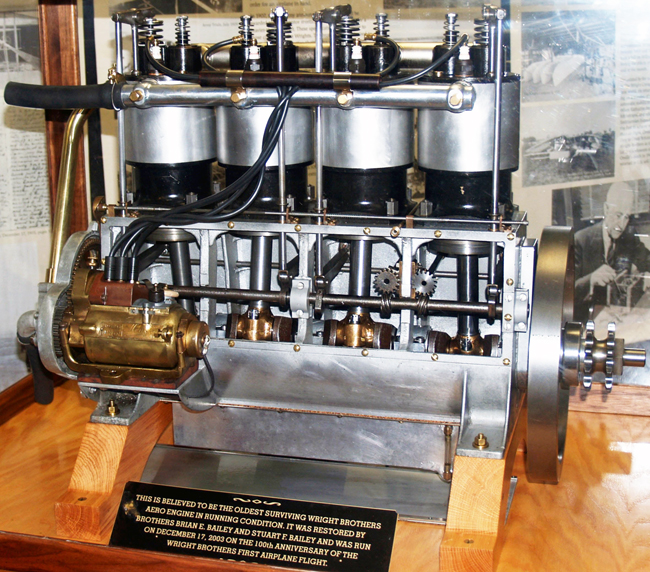
Oldest surviving Wright engine (New England Air Museum). This is a straight four. Notice that the outer piston connecting rods are pinned to the crankshaft 180 degrees out of phase with the inner two. Also note the heavy flywheel on the RHS of the photo.
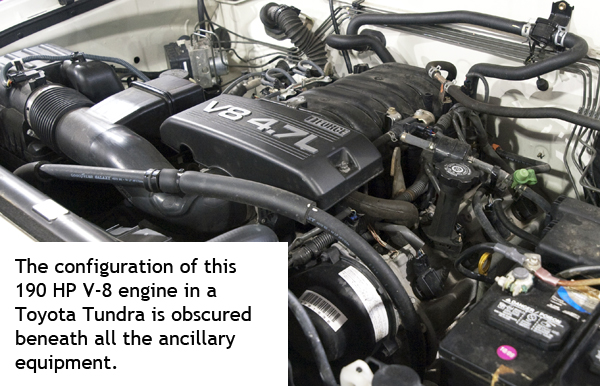
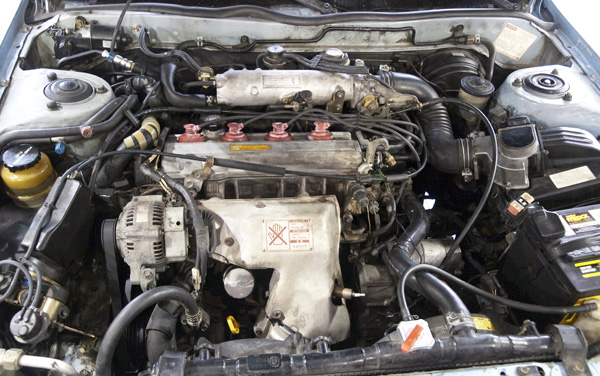
Straight-4 Toyota Camry engine mounted sideways.
